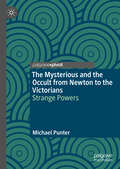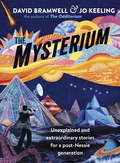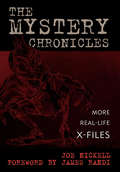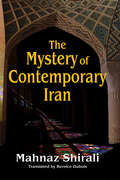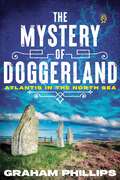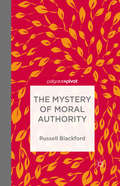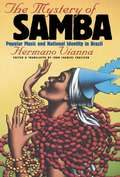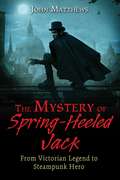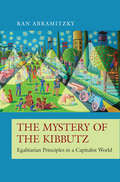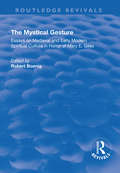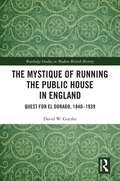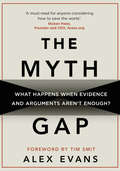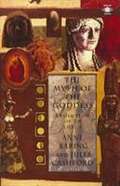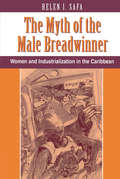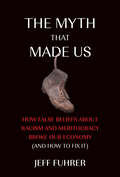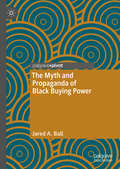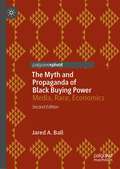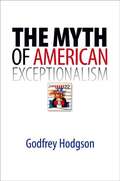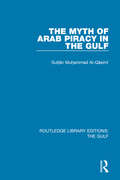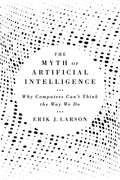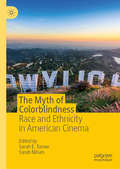- Table View
- List View
The Mysterious Mr. Nakamoto: A Fifteen-Year Quest to Unmask the Secret Genius Behind Crypto
by Benjamin WallaceA thrilling investigation into the mysterious identity of Bitcoin&’s creator and a deep dive into crypto&’s utopian origin story—from The New York Times bestselling author of The Billionaire&’s Vinegar&“Could be the best mystery story of the past twenty years.&”—James Patterson &“The Mysterious Mr. Nakamoto will leave you amazed, enlightened, and utterly breathless.&”—Robert Kolker, #1 New York Times bestselling author of Hidden Valley RoadIn October 2008, someone going by the name Satoshi Nakamoto posted a white paper outlining &“a peer-to-peer electronic cash system&” called Bitcoin to an arcane listserv populated by Cypherpunks. No one in the community had heard of Nakamoto, and just as people were starting to wonder who he was, he vanished. As the years passed, and the scope of Nakamoto&’s achievement became clear, the truth of his identity grew into the greatest unsolved mystery of our time.The Mysterious Mr. Nakamoto traces Benjamin Wallace&’s attempt to unmask the figure behind the currency and the world it wrought. Nakamoto&’s Bitcoin at first seemed destined to fulfill the dreams of fringe 1990s utopians for a currency set free from governments and big banks. Yet after he disappeared, his creation took on a strange new life in the financial markets, where rampant speculation fueled a vision of crypto as a potential windfall, inviting charlatans and scammers and opening a vast gulf between Bitcoin&’s idealistic origins and its troubled reputation.But who was Nakamoto? Whoever he was could rightly claim to have invented one of the most important technologies of the new century. And Nakamoto was a billionaire—his Bitcoin wallet held an untouched eleven-figure fortune waiting to be claimed.With the same propulsive-narrative flair that made his New York Times bestseller The Billionaire&’s Vinegar an instant success, Benjamin Wallace presents a page-turning work of investigative journalism. Tracking leads from London to Oslo to Los Angeles, from coastal Australia to the Arizona desert, he takes readers through a rogues&’ gallery tour of Nakamoto suspects—from benevolent geniuses like cryptographer Hal Finney to difficult ones like a reclusive polymath known to his followers only as Jim; from the mercurial Australian Craig Wright, who claims to be Nakamoto, to a secret team at the National Security Agency. With the forensic skill of Sherlock Holmes and the storytelling verve of Arthur Conan Doyle, Wallace follows the trail of computer code and personal writings to the heart of the Nakamoto mystery while interrogating the very nature of mystery itself.
The Mysterious and the Occult from Newton to the Victorians: Strange Powers
by Michael PunterThis book examines the search for ‘occult’ or hidden forces in the two centuries after Newton’s theory of gravity. It investigates how history has simplified the work of some of the key figures of the age, presenting them as ‘legitimate’ and removing their more complex motivations. This book is a scholarly but readable exploration of forces we rely upon (electricity) and ones we have abandoned (vital fluid, animal magnetism). Ranging across literature, drama, philosophy and science, it demonstrates how hopes, fears and anxieties around occult phenomena have been expressed over time.
The Mysterium: Unexplained and extraordinary stories for a post-Nessie generation
by David Bramwell Jo KeelingIn THE MYSTERIUM David Bramwell and Jo Keeling (authors of THE ODDITORIUM), present a user guide to the strange and unexplained corners of modern life. THE MYSTERIUM catalogues a host of bizarre, funny and intriguing stories for a post-Nessie generation still fascinated by the unknowable. Drawing on contemporary folklore, unsolved mysteries, and unsettling phenomena from the dark corners of the internet, this book celebrates the joy of asking questions and the thrill of finding answers which stop you dead in your tracks.Featuring a group of men who scared themselves to death, Space's version of the Bermuda Triangle, a cat who can sniff out the dying and the tale of Slender Man, the monster who stepped out of Photoshop and into our nightmares, this fascinating book is a catalogue of the extraordinary, the strange, the mysterious and the downright creepy.
The Mysterium: Unexplained and extraordinary stories for a post-Nessie generation
by David Bramwell Jo Tinsley'A FANTASTICALLY DIVERTING COLLECTION OF GREAT STORIES... AN IDEAL XMAS PRESENT' Stuart Maconie, 6Music'I ENJOYED IT ENORMOUSLY' Danny Baker, Radio 5 Live'BRILLIANTLY DONE ... ORIGINAL AND DIFFERENT', Dan Schreiber, No Such Thing As A FishA CATALOGUE OF THE EXTRAORDINARY, THE STRANGE AND THE DOWNRIGHT CREEPY...Discover the unexplained mysteries and unsettling oddities of the modern world, from a beach in British Columbia awash with human feet, to the 'tulpamancers' who claim to be channeling the living spirit of My Little Pony. Ponder terrifying thought experiments (can you think yourself to death?), and reflect on life's great questions (was the Garden of Eden located in Bedford?).In THE MYSTERIUM David Bramwell and Jo Keeling (authors of THE ODDITORIUM), present a user guide to the strange and unexplained corners of modern life. THE MYSTERIUM catalogues a host of bizarre, funny and intriguing stories for a post-Nessie generation still fascinated by the unknowable. Drawing on contemporary folklore, unsolved mysteries, and unsettling phenomena from the dark corners of the internet, this book celebrates the joy of asking questions and the thrill of finding answers which stop you dead in your tracks.Featuring a group of men who scared themselves to death, Space's version of the Bermuda Triangle, a cat who can sniff out the dying and the tale of Slenderman, the monster who stepped out of Photoshop and into our nightmares, this fascinating book is a catalogue of the extraordinary, the strange, the mysterious and the downright creepy.Includes a Foreword by Dan Schreiber, comedian and host of the No Such Thing As A Fish podcast.
The Mystery Chronicles: More Real-Life X-Files
by Joe Nickell&“Science-based explanations for unusual happenings [and] documented solutions for more than three dozen mysteries.&” ―Dallas Morning News Investigator Joe Nickell has spent over thirty years solving the world&’s most perplexing mysteries. This new casebook reveals the secrets of the Winchester Mystery House, the giant Nazca drawings of Peru, the Shroud of Turin, the &“Mothman&” enigma, the Amityville Horror house, the vicious goat-sucking El Chupacabra, and many other &“unexplainable&” phenomena. Nickell has traveled far and wide to solve cases, which include a weeping icon in Russia, the elusive Bigfoot-like &“yowie&” in Australia, the reputed power of a headless saint in Spain, and an &“alien hybrid&” in Germany. He has gone undercover—often in disguise—to reveal the tricks of those who pretend to talk to the dead; accompanied a Cajun guide into a Louisiana swamp in search of a fabled monster; and gained an audience with a voodoo queen. Superstar psychic medium John Edward, pet psychic Sonya Fitzpatrick, evangelist and healer Benny Hinn, and many other well-known figures have found themselves under Nickell&’s careful scrutiny. The Mystery Chronicles examines more than three dozen intriguing mysteries, as Nickell uses a hands-on approach and the scientific method to steer between the extremes of mystery mongering and debunking. With a foreword by James Randi &“His varied work experience as a private investigator, forensic document analyst, stage magician, carnival pitchman, and English professor gives him credibility as a hard-nosed researcher and writer.&” —Booklist &“In straightforward, understated prose, Nickell describes frauds, deceptions and instances of superstition among vulnerable and gullible victims, some of which he exposed by covert investigations.&” —Publishers Weekly
The Mystery of Contemporary Iran
by Mahnaz ShiraliThe mystery of how an Islamic dictatorship came to power remains more than thirty years after the Islamic Republic's inception in Iran. The precise nature of a regime that calls itself both a republic and Islamic but is neither is little understood. The ayatollahs' unpopularity may have reached unprecedented heights, but their power seems more secure. Such paradoxes weigh heavily and judgments diverge. While public opinion wonders how an archaic theocratic regime could survive so long, some explain it in terms of Iran's continued modernization and the clergy's ability to reconcile itself with politics.Understanding the modernization process propelled by the Constitutional Revolution is difficult and raises questions. How and why could ideological Islam continue to dominate Iranian society since the late 1970s? How did it gain power and influence and overcome the reforms molded by the Constitutional Revolution? Mahnaz Shirali analyzes twentieth-century Iranian history to understand the Shiite clergy's role in a modernized country's social and political organization. She explains what enabled the clergy to take over prevailing political forces and gain control of the state.Studying Iran's history for the past one hundred years reveals the force of a religious conservatism opposing political modernity, repelling any attempt at democracy by Iranians, thanks to its constant metamorphoses. Shirali studies the curse of the Shiite clergy on political modernity. It is a convincing, in-depth criticism of the ideological Islam imposed on Iran.
The Mystery of Doggerland: Atlantis in the North Sea
by Graham PhillipsA scientific exploration of the advanced ancient civilization known as Doggerland or Fairland that disappeared 5,000 years ago• Looks at the latest archaeological and scientific evidence preserved beneath the North Sea and on the tiny island of Fair Isle• Examines Doggerland&’s sophisticated technology, including how its people were able to melt solid rock to create vitrified structures far stronger than concrete• Shows how the survivors of the destruction of Doggerland sailed to the British Isles and established the megalithic culture that built StonehengeNew marine archaeological evidence has revealed the remains of a large landmass to the north of Britain that hosted an advanced civilization 1,000 years before the recognized &“first&” civilizations of ancient Egypt, Mesopotamia, or India. Remembered in Celtic legends as Tu-lay, and referred to by geologists as Doggerland or Fairland, this civilization began at least as early as 4000 BCE but was ultimately destroyed by rising sea levels, huge tsunamis, and a terrible viral epidemic released from melting permafrost during a cataclysmic period of global warming. Exploring the latest archaeological findings and recent scientific analysis of Doggerland&’s underwater remains, Graham Phillips shows that this ancient culture had sophisticated technology and advanced medical knowledge. He looks at evidence detected with remote sensing and seismic profiling of many artificial structures, complex settlements, gigantic earthworks, epic monoliths, and huge stone circles dated to more than 5,500 years ago preserved beneath the ground and on the ocean floor. He also looks at the small part of the Fairland landmass that still exists: Fair Isle, a tiny island some 45 miles north of the Orkney Islands of Scotland. Phillips shows how, when Fairland sank beneath the waves around 3100 BCE, its last survivors traveled by boat to settle in the British Isles, where they established the megalithic culture that built Stonehenge. Revealing the vast archaeological evidence in support of the existence of Doggerland, as well as its threads of influence in early cultures around the world, Phillips also shows how the fate of this sophisticated ancient culture is a warning from history: the cataclysmic events that happened to the first civilizations could happen again as the world heats up.
The Mystery of Moral Authority
by Russell BlackfordThe Mystery of Moral Authority argues for a sceptical and pragmatic view of morality as an all-too-human institution. Searching, intellectually rigorous, and always fair to rival views, it represents the state of the art in a tradition of moral philosophy that includes Thomas Hobbes, David Hume, and J.L. Mackie.
The Mystery of Samba: Popular Music and National Identity in Brazil
by Hermano ViannaSamba is Brazil's "national rhythm," the foremost symbol of its culture and nationhood. To the outsider, samba and the famous pre-Lenten carnival of which it is the centerpiece seem to showcase the country's African heritage. Within Brazil, however, samba symbolizes the racial and cultural mixture that, since the 1930s, most Brazilians have come to believe defines their unique national identity. But how did Brazil become "the Kingdom of Samba" only a few decades after abolishing slavery in 1888? Typically, samba is represented as having changed spontaneously, mysteriously, from a "repressed" music of the marginal and impoverished to a national symbol cherished by all Brazilians. Here, however, Hermano Vianna shows that the nationalization of samba actually rested on a long history of relations between different social groups--poor and rich, weak and powerful--often working at cross-purposes to one another. A fascinating exploration of the "invention of tradition," The Mystery of Samba is an excellent introduction to Brazil's ongoing conversation on race, popular culture, and national identity.
The Mystery of Spring-Heeled Jack: From Victorian Legend to Steampunk Hero
by John MatthewsAn extensive investigation of the origins and numerous sightings of the mysterious and terrifying figure known as Spring-Heeled Jack • Shares original 19th-century newspaper accounts of Spring-Heeled Jack encounters as well as 20th and 21st-century reports • Explains his connections to Jack the Ripper and the Slender Man • Explores his origins in earlier mythical beings from folklore, his Steampunk popularity, and the theory that he may be an alien from a high-gravity planet Spring-Heeled Jack--a tall, thin, bounding figure with bat-like wings, clawed hands, wheels of fire for eyes, and breath of blue flames--first leapt to public attention in Victorian London in 1838, springing over hedges and walls, from dark lanes and dank graveyards, to frighten and sometimes physically attack women. News of this strange and terrifying character quickly spread, but despite numerous sightings through 1904 he was never captured or identified. Exploring the vast urban legend surrounding this enigmatic figure, John Matthews explains how the Victorian fascination with strange phenomena and sinister figures paired with hysterical reports enabled Spring-Heeled Jack to be conjured into existence. Sharing original 19th-century newspaper accounts of Spring-Heeled Jack sightings and encounters, he also examines recent 20th and 21st-century reports, including a 1953 UFO-related sighting from Houston, Texas, and disturbing accounts of the Slender Man, who displays notable similarities with Jack. He traces Spring-Heeled Jack’s origins to earlier mythical beings from folklore, such as fairy creatures and land spirits, and explores the theory that Jack is an alien marooned on Earth whose leaping prowess is attributed to his home planet having far stronger gravity than ours. The author reveals how Jack the Ripper, although a different and much more violent character, chose to identify himself with the old, well-established figure of Spring-Heeled Jack. Providing an extensive look at Spring-Heeled Jack from his beginnings to the present, Matthews illustrates why the worldwide Steampunk community has so thoroughly embraced Jack.
The Mystery of the Kibbutz: Egalitarian Principles in a Capitalist World
by Ran AbramitzkyHow the kibbutz movement thrived despite its inherent economic contradictions and why it eventually declinedThe kibbutz is a social experiment in collective living that challenges traditional economic theory. By sharing all income and resources equally among its members, the kibbutz system created strong incentives to free ride or—as in the case of the most educated and skilled—to depart for the city. Yet for much of the twentieth century kibbutzim thrived, and kibbutz life was perceived as idyllic both by members and the outside world. In The Mystery of the Kibbutz, Ran Abramitzky blends economic perspectives with personal insights to examine how kibbutzim successfully maintained equal sharing for so long despite their inherent incentive problems.Weaving the story of his own family’s experiences as kibbutz members with extensive economic and historical data, Abramitzky sheds light on the idealism and historic circumstances that helped kibbutzim overcome their economic contradictions. He illuminates how the design of kibbutzim met the challenges of thriving as enclaves in a capitalist world and evaluates kibbutzim’s success at sustaining economic equality. By drawing on extensive historical data and the stories of his pioneering grandmother who founded a kibbutz, his uncle who remained in a kibbutz his entire adult life, and his mother who was raised in and left the kibbutz, Abramitzky brings to life the rise and fall of the kibbutz movement.The lessons that The Mystery of the Kibbutz draws from this unique social experiment extend far beyond the kibbutz gates, serving as a guide to societies that strive to foster economic and social equality.
The Mystic Warriors of the Plains: The Culture, Arts, Crafts and Religion of the Plains Indians
by Thomas E. MailsThe mystic warriors of the plains is an indepth look at the history, customs, religeon, art work and dress of the American plains Indians. A look at the tribes that developed a civilization that rivals any of the ancient civilizations of the world.
The Mystical Beast
by Alison FarthingSara and Henry are carried to the Other Side where it is never nice and ordinary and tidy, but it has spells and one happening after another.
The Mystical Gesture: Essays on Medieval and Early Modern Spiritual Culture in Honor of Mary E.Giles
by Robert BoenigThis title was first published in 2000: These essays ecplore the spiritual culture shared by texts and writers in Western Europe from the 13th to 17th centuries; the visionaries, mystics and nuns who were poets or scholars and the creative writers who drew on spiritual themes. The topics range chronologically from the late 13th to late 17th centuries and geographically from Germany, England, Italy, France, Spain and New Spain (Mexico), though the volume's centre is the spiritual culture of 16th-century Spain. Common concerns of each essay are the exploration of spiritual culture; how some texts and writers shape expectations attending the life of the spirit; and how they are in turn shaped by them. The sub-themes many of the essays share are the gendering of spiritual culture and the relationship between traditional literary genres like poetry and drama and spiritual discourse. Each text or spiritual figure covered here has a distinctive spiritual voice - a mystical gesture - that contributes an individual mysticism to the common spiritual culture they all share. Each scholar in her or his own way defines this mystical gesture. The essays analyze Mechthild von Magdburg, "Piers Plowman", "The Second Shepherds' Play", Catherine of Siena, Bernardo de Laredo, Teresa of Avila, Alonso de la Fuente, Luisa de Carvajal y Mendoza, Cecilian de nacimiento, Margaret Mary Alaconque and Sor Juana.
The Mystique of Running the Public House in England: Quest for El Dorado, 1840-1939 (Routledge Studies in Modern British History)
by David W. GutzkeThis book is the first scholarly study to explore economic relations between brewers and publicans in the brewing industry over a century.Based on overlooked historical evidence, this volume examines over 400 interviews with candidates for public houses, unpublished evidence of royal commissions heard in secrecy, representations of publicans in fiction and film and systematic reading of 15 licensed victuallers’ newspapers. The Mystique of Running the Public House in England situates licensed victualling among upper-working- and lower-middle-class occupations in England and abroad. This book explores why aspiring but untrained individuals sought public house tenancies, notwithstanding high levels of turnovers and numerous bankruptcies among licensed victuallers. Encapsulated in any newcomer’s appraisal was the captivating vision of El Dorado, a nirvana which promised unimaginable wealth, high social status, respectability and social mobility as rewards for those limited in income but not in ambition. Despite the allure of El Dorado, the likelihood of publicans realizing their aspirations was quite as remote as that of fish and chip proprietors, Blackpool landladies and French café proprietors. This volume will be of great value to students and scholars alike interested in British History, Economic History and Social and Cultural History.
The Myth Of The Goddess: Evolution Of An Image (Compass Series)
by Laurens Van Der Post Jules Cashford Anne Baring"An indispensable source work for anyone interested in this very important development of religious ideas."—Marija Gimbutas. Ranges from the Paleolithic Age to the present-day Gaia Hypothesis.
The Myth Of The Male Breadwinner: Women And Industrialization In The Caribbean
by Helen I SafaFirst Published in 2018. Routledge is an imprint of Taylor & Francis, an Informa company.
The Myth That Made Us: How False Beliefs about Racism and Meritocracy Broke Our Economy (and How to Fix It)
by Jeff FuhrerHow our false narratives about post-racism and meritocracy have been used to condone egregious economic outcomes—and what we can do to fix the system.The Myth That Made Us exposes how false narratives—of a supposedly post-racist nation, of the self-made man, of the primacy of profit- and shareholder value-maximizing for businesses, and of minimal government interference—have been used to excuse gross inequities and to shape and sustain the US economic system that delivers them. Jeff Fuhrer argues that systemic racism continues to produce vastly disparate outcomes and that our brand of capitalism favors doing little to reduce disparities. Evidence from other developed capitalist economies shows it doesn&’t have to be that way. We broke this (mean-spirited) economy. We can fix it.Rather than merely laying blame at the feet of both conservatives and liberals for aiding and abetting an unjust system, Fuhrer charts a way forward. He supplements evidence from data with insights from community voices and outlines a system that provides more equal opportunity to accumulate both human and financial capital. His key areas of focus include universal access to high-quality early childhood education; more effective use of our community college system as a pathway to stable employment; restructuring key aspects of the low-wage workplace; providing affordable housing and transit links; supporting people of color by serving as mentors, coaches, and allies; and implementing Baby Bonds and Reparations programs to address the accumulated loss of wealth among Black people due to the legacy of enslavement and institutional discrimination. Fuhrer emphasizes embracing humility, research-based approaches, and community involvement as ways to improve economic opportunity.
The Myth and Propaganda of Black Buying Power
by Jared A. BallThis Palgrave Pivot offers a history of and proof against claims of "buying power" and the impact this myth has had on understanding media, race, class and economics in the United States. For generations Black people have been told they have what is now said to be more than one trillion dollars of "buying power," and this book argues that commentators have misused this claim largely to blame Black communities for their own poverty based on squandered economic opportunity. This book exposes the claim as both a marketing strategy and myth, while also showing how that myth functions simultaneously as a case study for propaganda and commercial media coverage of economics. In sum, while “buying power” is indeed an economic and marketing phrase applied to any number of racial, ethnic, religious, gender, age or group of consumers, it has a specific application to Black America.
The Myth and Propaganda of Black Buying Power: Media, Race, Economics
by Jared A. BallThe second edition of this Palgrave Pivot offers a history of and proof against claims of "buying power" and the impact this myth has had on understanding media, race, class and economics in the United States. For generations Black people have been told they have what is now said to be more than one trillion dollars of "buying power," and this book argues that commentators have misused this claim largely to blame Black communities for their own poverty based on squandered economic opportunity. This book exposes the claim as both a marketing strategy and myth, while also showing how that myth functions simultaneously as a case study for propaganda and commercial media coverage of economics. In sum, while “buying power” is indeed an economic and marketing phrase applied to any number of racial, ethnic, religious, gender, age or group of consumers, it has a specific application to Black America. A new foreword by Dr. Darrick Hamilton, Henry Cohen Professor of Economics and Urban Policy at the New School (in New York, USA), and a new chapter on cryptocurrencies are included in this new edition.
The Myth of American Exceptionalism
by Godfrey HodgsonThe idea that the United States is destined to spread its unique gifts of democracy and capitalism to other countries is dangerous for Americans and for the rest of the world, warns Godfrey Hodgson in this provocative book.
The Myth of Arab Piracy in the Gulf
by Muhammad Al-QasimiThe British became the dominant power in the Arab Gulf in the late eighteenth century. The conventional view has justified British imperial expansion in the Gulf region because of the need to supress Arab piracy. This book, first published in 1988, challenges the myth of piracy and argues that its threat was created by the East India Company for commercial reasons. The Company was determined to increase its share of Gulf trade with India at the expense of the native Arab traders, especially the Qawasim of the lower Gulf. However, the Company did not possess the necessary warships and needed to persuade the British Government to commit the Royal Navy to achieve this dominance. Accordingly the East India Company orchestrated a campaign to misrepresent the Qawasim as pirates who threatened all maritime activity in the northern Indian Ocean and adjacent waters. Any misfortune that happened to any ship in the area was attributed to the ‘Joasmee pirates’. This campaign was to lead eventually to the storming of Ras al-Khaimah and the destruction of the Qawasim. Based on extensive use of the Bombay Archives, previously unused by researchers, this book provides a thorough reinterpretation of a vital period in Gulf history. It also illuminates the style and method of the East India Company at a critical period in the expansion of the British Empire.
The Myth of Artificial Intelligence: Why Computers Can't Think the Way We Do
by Erik J. Larson“Artificial intelligence has always inspired outlandish visions—that AI is going to destroy us, save us, or at the very least radically transform us. Erik Larson exposes the vast gap between the actual science underlying AI and the dramatic claims being made for it. This is a timely, important, and even essential book.” —John Horgan, author of The End of Science Many futurists insist that AI will soon achieve human levels of intelligence. From there, it will quickly eclipse the most gifted human mind. The Myth of Artificial Intelligence argues that such claims are just that: myths. We are not on the path to developing truly intelligent machines. We don’t even know where that path might be. Erik Larson charts a journey through the landscape of AI, from Alan Turing’s early work to today’s dominant models of machine learning. Since the beginning, AI researchers and enthusiasts have equated the reasoning approaches of AI with those of human intelligence. But this is a profound mistake. Even cutting-edge AI looks nothing like human intelligence. Modern AI is based on inductive reasoning: computers make statistical correlations to determine which answer is likely to be right, allowing software to, say, detect a particular face in an image. But human reasoning is entirely different. Humans do not correlate data sets; we make conjectures sensitive to context—the best guess, given our observations and what we already know about the world. We haven’t a clue how to program this kind of reasoning, known as abduction. Yet it is the heart of common sense. Larson argues that all this AI hype is bad science and bad for science. A culture of invention thrives on exploring unknowns, not overselling existing methods. Inductive AI will continue to improve at narrow tasks, but if we are to make real progress, we must abandon futuristic talk and learn to better appreciate the only true intelligence we know—our own.
The Myth of Colorblindness: Race and Ethnicity in American Cinema
by Sarah E. Turner Sarah NilsenThis book explores representations of race and ethnicity in contemporary cinema and the ways in which these depictions all too often promulgate an important racial ideology: the myth of colorblindness. Colorblindness is a discursive framework employed by mainstream, neoliberal media to celebrate a multicultural society while simultaneously disregarding its systemic and institutionalized racism. This collection is unique in its examination of such films as Ex Machina, The Lone Ranger, The Blind Side, Zootopia, The Fast and the Furious franchise, and Dope, which celebrate the myth of colorblindness, yet perpetuate and entrench the racism and racial inequities that persist in contemporary society. While the #OscarsSoWhite movement has been essential to bringing about structural changes to media industries and offers the opportunity for a wide diversity of voices to alter and transform the dominant, colorblind narratives continue to proliferate. As this book demonstrates, Hollywood still has a long way to go.

